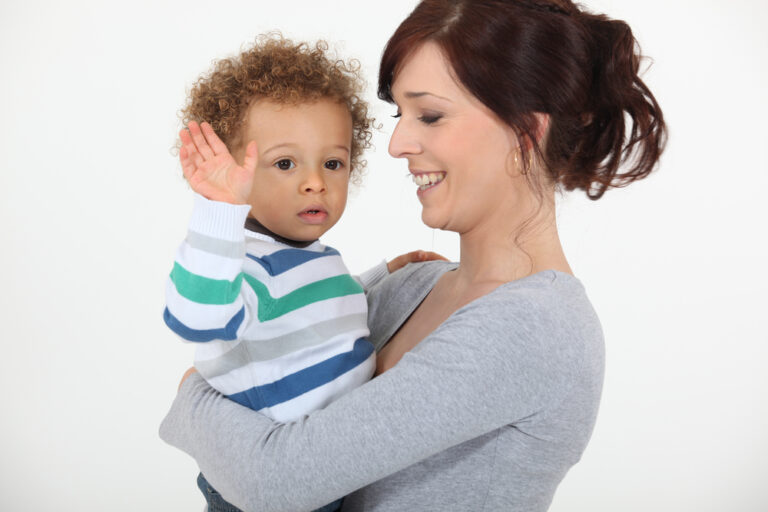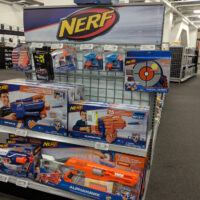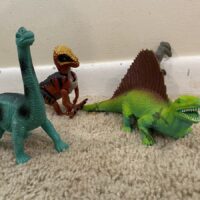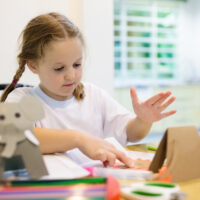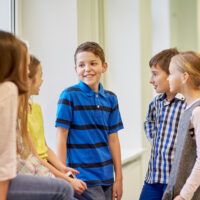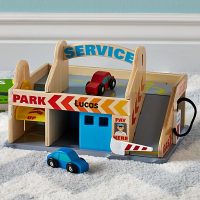While many babies can’t communicate with words, their non-verbal communication skills start within the first couple of weeks of life. Your baby may smile at you, coo gently, and cry in different ways in their first few months of life. As they grow, their ability to communicate in different ways grows, too. Below, you’ll learn more about how to teach baby to wave and when you can expect this milestone.
Teach Your Baby What a Wave is
Waving is a physical action with a verbal meaning. People typically use it as a greeting, whether they are waving hello or waving goodbye.
The best way to get your baby to create a connection between waving and its meaning is to practice waving with your baby. Gently hold your baby’s hand or wrist while you move it back and forth. Tell them, “Wave goodbye to Dad” or “Wave hello to grandma” as you do this. Encourage other people to wave when your child does, too.
Reinforce Movements with Meaning
Reinforcing any movements with meaning helps your baby build the foundation for learning to wave later on. There are a lot of games that you can play with your baby to reinforce this idea. For example, singing the ‘Itsy Bitsy Spider’ while you do the hand movements reinforces that hand motions can have meaning. Finger games like patty cake are great for reinforcing this idea, too.
Encourage Your Offer Lots of Praise
Babies develop their own unique waves. They might wiggle their fingers, flap their arms, or do an awkward princess-style wave. Regardless of how it looks, always wave back and offer lots of praise. Talk in an excited voice as you offer praise to your little one and let you know how happy you are that they’re trying. When they see how happy it makes you, they are more likely to try it again in the future. They’ll be waving like a pro before you know it!
Wave at Your Baby
Babies look up to the people around them as role models. You are one of the people that your baby learns from most. Therefore, when you take the time to wave at your baby to say hello and goodbye, they are learning to communicate that way with you, too.
You should also encourage grandparents, aunts, uncles, friends, siblings, and anyone else to wave at you and your baby. This reinforces the idea that waving is a way that people communicate with each other. When people wave, wave back yourself, and then gently wave back with your baby’s hand/arm.
Use a Mirror
Babies love watching themselves in the mirror. This is especially true as they begin self-recognition and understanding that their hands, fingers, toes, and the rest of their body belong to them. Hold your baby as you sit or stand in front of the mirror. If your baby is new to self-discovery, point to yourself and say ‘mom’ or ‘dad’. Then, point to your little one and say ‘baby’ or their name.
You can also wave at your baby in the mirror. Say something like, “Mommy waves hello.” Then, gently wave your baby’s arm as you say, “Baby waves hello.” Over time, they’ll learn what the movement looks like. This also gives them a chance to practice what they are watching you do since they see what they are doing.
Start Communication Early
Even before your baby can make cute cooing noises, they’ll be taking in stimuli from the world around them. Talk to your baby throughout the day and tell them what you are doing. Being extra animated with your baby also helps them make the connection between gestures and communication. Waving isn’t the only animation you should do. Make different faces when interacting with your baby or playing Peekaboo and show happy emotions as you talk to your little one. All these things shape the way your baby will communicate in the future.
Another skill that you can develop early that helps with making gestures like waving is holding your baby’s gaze. For your baby to watch (and eventually mimic) a skill, they have to watch it. In addition to looking into your baby’s eyes, you can have them track toys or their pacifier as you move it around in your hand. Watch to see if your baby’s eyes can track the toy.
Choose Toys that Encourage Development
Your baby learns from everything that is happening around them. They are going to grab at your hair, put their fingers (and yours) in their mouth, and explore anything they can.
Even though babies are perfectly content exploring the world around them, offering some baby toys gives your baby extra chances to learn. Choosing the best newborn toys for your baby helps them develop gross motor skills that build the foundation for hand gestures like waving and clapping.
As your baby grabs at their toy, moves beads around, pushes buttons, and more, they’re developing fine and gross motor skills. Your baby is also learning how their hands and fingers work, which is important for waving.
FAQs – How to Teach Baby to Wave
When can I teach my baby to wave?
Although it’s never too early to teach your baby, most babies don’t wave until they are around 9 months old. This might happen a few months earlier or later, depending on your baby’s development. Their exposure to people waving might also affect how soon they learn, as will their motor development. In most cases, your baby learns to wave around the same time they start trying to point and clap. Many babies learn how to wave first, then how to clap, then how to point.
Of course, even if your baby wants to wave, you have to wait until their motor development develops enough to wave. As your baby discovers his or her fingers and learns how to make them move, they’re building the basic functions that will eventually let them wave.
What if my baby doesn’t wave?
Some babies take longer to communicate than others. Even though nine months is the average timeline for developing this ability, there’s no cause for concern. By reinforcing the skill, you may find it’s easier for your baby to learn it. If you’ve tried helping them learn and they are over 1 year and you’re concerned, you can talk to their pediatrician about it.
Is it important for my baby to learn to wave?
Waving is a universal greeting that anybody understands. In addition to being incredibly adorable, learning to wave encourages social development. As your baby learns the skill, they’ll like to wave to anyone that comes across them. Many people light up when baby waves and your little one will delight in all the excitement that everyone shows when they do their new trick.
Final Word
Learning to wave is just one of many milestones as your baby learns to communicate with the world around them. While they aren’t likely to learn until they are at least 8-9 months old, you can start building the skills needed to wave much earlier than that. Hopefully, this guide on how to teach your baby to wave will have your little one waving in no time.
